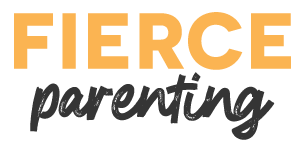Tech is everywhere and increasing. As parents discipling our children, we need constant reminders and calibration to find health how we use technology. So we asked our good friend (a tech-talk pro) for help!
Nathan Sutherland is the President the non-profit, Flint & Iron, where he’s spent the better part of 5 years speaking to schools about tech use among teens. This guide is a distilled version of the information he shares. Nathan also hosts the weekly Gospel Tech Podcast which is a great resource on the topic.
7 Facts About Technology Parents Need to Know
We all need grace, especially in this area. As technology saturates our world more each year, we’re often on our heels in how to deal with it. Thankfully, there’s a growing body of research to help us make wise, informed choices regarding tech (Eph 5:15–16, Psalm 90:12). The 7 facts below are an overview of the research available on tech use among children. We hope it helps you to disciple your children and lead your family well in this area.
Fact #1
There are two kinds of tech
Tech is either "Tool Tech" or "Drool Tech" based on how it's consumed, what it's for, and its effects on the brain.
Tool Tech
Focused on creating
Useful for making, exploring, learning, and completing tasks.
Life-paced
Operates at the pace of real life, not hyper-visual or fast-paced.
Is user driven
Tool tech is actively run by the user, and facilitates richer interaction.


Drool Tech
Focused on consumption
Designed to keep users passively consuming as long as possible.
Faster than life
Operates at a pace faster and is more vivid than real life.
Incentive driven
Driven by artificial incentives to prolong engagement (points, levels, leaderboards, rewards).
Fact #3
Tech is everywhere
We don’t try to use it, digital tech is simply how we get life done. The ubiquity of tech means we must be more vigilant than ever.
"Most people use 4–6 big tech products before noon. "
— Nathan Sutherland, Host of the Gospel Tech Podcast


More addictive to younger users
“Facebook’s own North American marketing director, Michelle Klein, who told an audience in 2016 that while the average adult checks his or her phone 30 times a day, the average millennial, she enthusiastically reported, checks more than 157 times daily.”
—Shoshana Zuboff, The Age of Surveillance Capitalism
Fact #4
Multi-tasking is a myth
While it’s long been considered a trait worthy of praise, multitasking is actually a problem, not an improvement. We don’t do two things well, we just switch our attention between two tasks poorly. This slows us down.3
Fact #5
Time and content matter
The amount of time, as well as the type of tech, plays a role in our mental health.
Fact #6
Tech needs to be in public spaces
There is no evidence that tech in the bedroom has any benefits. In fact, there are numerous studies highlighting the trouble that comes from such independent tech use.7, 8, 9
Create tech-free zones
• Bedrooms
• Meal times
• Play times
Limit tech before bed
Reduced sleep time has been linked to screen time and shorter periods of sleep are a risk factor for depression and suicide.

Fact #7
Fun should be at the pace of real-life
Dr. Christakis, Director of the Center for Child Health, Behavior and Development at Seattle Children’s Research Institute, studied the overstimulation of brains of children under age 7. He found that the pace of a show matters as much as the time viewed and the content.
Mr. Rogers
0% more likely to experience inattention

Powder Puff Girls
60% more likely to experience inattention

Violent Programming
110% more likely to experience inattention

Dr. Christakis looked at the brains of young people who watched the above shows and found that by age 7, it dramatically affected their experience of inattention.10
next steps
Where do we go from here?
Habits around tech are tough to break, but not impossible. Here are some practical steps we recommend taking toward healthier tech use:
- Audit your family's daily/weekly tech use
- Discuss "Drool Tech vs. Tool Tech" with your children
- Create a "Tech Use Plan" for your family that outlines times and places that will always be tech free
Sources Cited
- Rideout, Victoria and Robb, Michael. “Screen Media Use: Overview.” The Common Sense Census: Media use by tweens and teens, p.23, Common Sense Media, 2019, New York NY.
- Rogers, Kristen. “US Teens Use Screens More Than Seven Hours a Day on Average—and That’s Not Including School Work.” CNN Health, 29 October 2019, www.cnn.com/2019/10/29/health/common-sense-kids-media-use-report-wellness/index.html.
- Hamilton, John. “Think You’re Multi-tasking? Think Again.” Morning Edition, NPR, 2 October 2008, www.npr.org/templates/story/story.php?storyId=95256794.
- Mendoza, Pody, Lee. “The Effect of Cellphones on Attention and Learning: The Influences of Time, Distraction, and Nomophobia.” Computers in Human Behavior, vo. 86, pp. 52-60, September 2018, doi.org/10.1016/j.chb.2018.04.027.
- Beland, L.P. & Murphy, R. “Ill Communication: Technology, Distraction & Student Performance.” Centre for Economic Performance, no. 1350, May 2015, cep.lse.ac.uk/pubs/download/dp1350.pdf.
- Twenge, Joiner, Rogers, et al. “Increases in Depressive Symptoms, Suicide-Related Outcomes, and Suicide Rates Among U.S. Adolescents After 2010 and Links to Increased New Media Screen Time.” Clinical Psychology Science, vo. 6, no. 1, pp. 3-17, 14 November 2017.
- Kardaras, Nicholas. Glow Kids, pp. 60-61, St. Martin’s Press, 2016, New York NY.
- Glozier, Martiniuk, Patton, et al. “Short Sleep Duration in Prevalent and Persistent Psychological Distress in Young Adults: The DRIVE Study.” Sleep, v. 33, no. 9, pp. 1139– 1145, September 2010, https://academic.oup.com/sleep/article/33/9/1139/2454518.
- Zhai, Zhang, & Zhang. “Sedentary Behaviour and the Risk of Depression: A Meta- Analysis.” British Journal of Sports Medicine, v.49, no. 11, 15 May 2015.
- Christakis, Dmitri. “Media and Children.” TEDx Rainier, 28 December 2011, www.youtube.com/watch?v=BoT7qH_uVNo.

